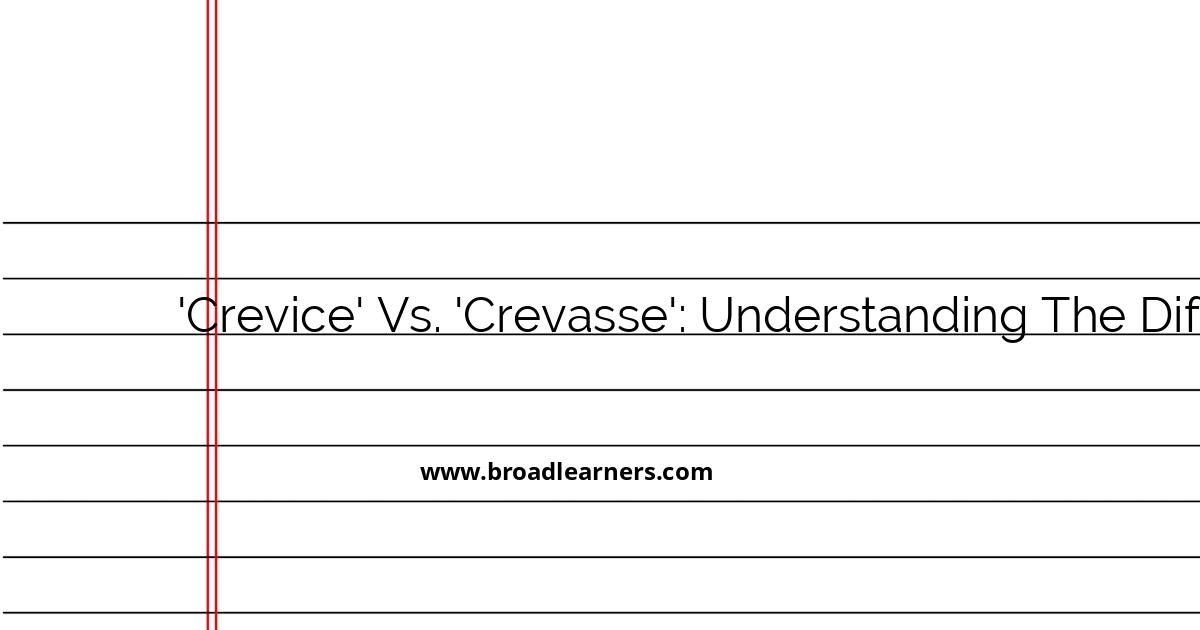When discussing geological features or describing narrow openings, it's common to encounter the terms "crevice" and "crevasse". Although both refer to openings or spaces, they are not interchangeable and are used in distinct contexts. Understanding the difference between these two terms is important for clarity and precision in communication. Let's delve into the definitions and usage of each term.
- Crevice
- A crevice is a narrow opening or crack, generally in a hard surface such as rock or the surface of the earth. Its characteristics include being small and often irregular.
| Attribute | Crevice |
|---|---|
| Size | Typically small and narrow |
| Location | Found in rocks, cliffs, man-made surfaces |
| Common Contexts | Describing cracking in walls, rocks, or pavements |
Example:
During the hike, we noticed several crevices in the ancient rock faces, home to various tiny plants.
- Crevasse
- A crevasse is a large fissure or deep opening, often found in glaciers or ice fields. Unlike crevices, crevasses are significantly larger in size and can be quite deep.
| Attribute | Crevasse |
|---|---|
| Size | Large and wide |
| Location | Found in glaciers, ice fields |
| Common Contexts | Discussing glacial formations, hazards during ice exploration |
Example:
The expedition team had to carefully navigate around the vast crevasses scattered across the glacier to avoid any hazards.
In conclusion, although crevice and crevasse both refer to openings or fissures, their usage is dependent on the type of surface and size. A crevice is small and typically found in rock or surface terrain, whereas a crevasse is large and associated with glacial ice. Using the correct term is essential for precise and effective communication, especially in descriptive or scientific contexts.

Did I miss anything? Respond below